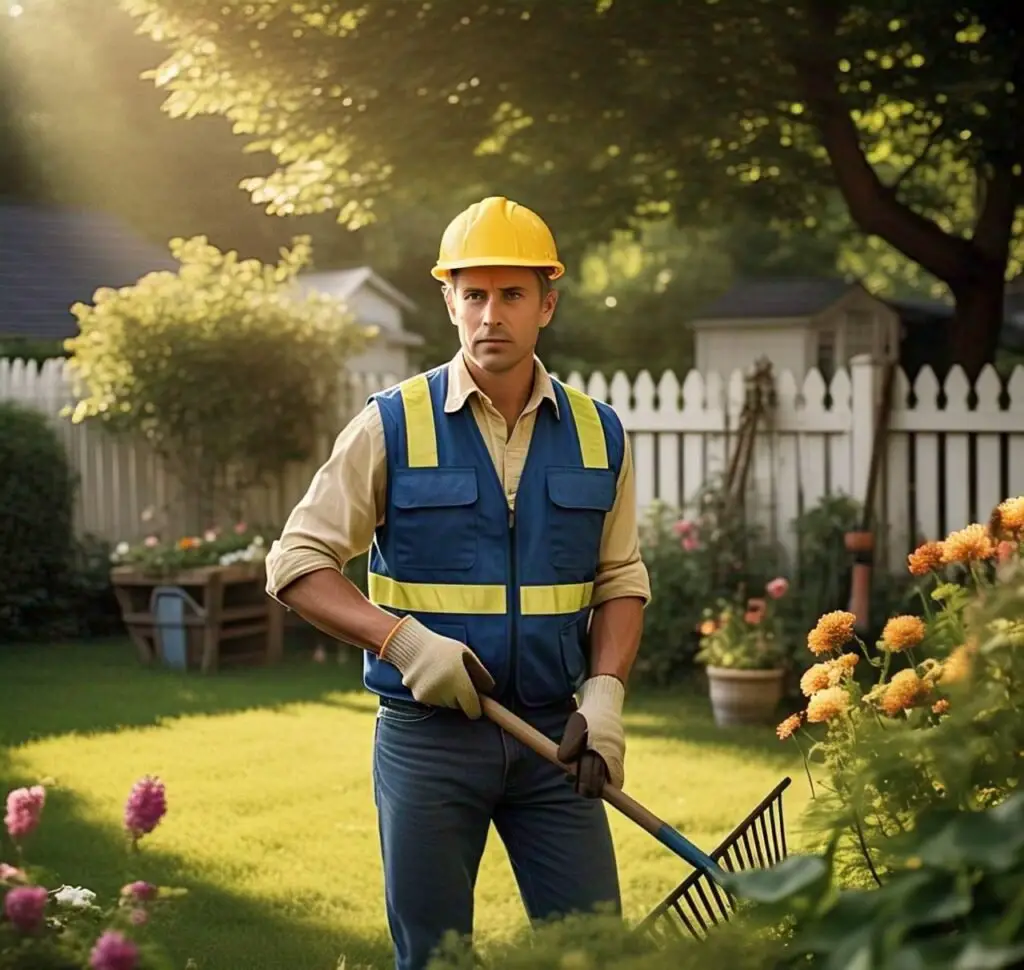Yard maintenance is one of the most important aspects of keeping your outdoor space vibrant, healthy, and visually appealing. Whether you’re a seasoned gardener or a beginner, understanding the fundamentals of yard maintenance can transform your yard into a lush, inviting haven. From mowing and watering to pest control and seasonal clean-up, every step plays a vital role in ensuring your yard thrives throughout the year. In this blog post, we’ll explore essential yard maintenance tips that will help you achieve a beautiful and well-maintained outdoor space.
Why Yard Maintenance Matters
Yard maintenance is more than just keeping your grass green and your plants alive. It’s about creating a space that enhances your home’s curb appeal, provides a safe environment for your family, and supports the local ecosystem. A well-maintained yard can also increase your property value and reduce the risk of pests and diseases. By investing time and effort into yard maintenance, you’re not only improving the aesthetics of your home but also contributing to a healthier environment.
The Basics of Yard Maintenance
1. Regular Mowing for a Healthy Lawn
Mowing is one of the most fundamental aspects of yard maintenance. It keeps your lawn looking neat and encourages healthy grass growth. However, mowing isn’t just about cutting the grass—it’s about doing it correctly.
- Set the Right Mower Height: Avoid cutting your grass too short, as this can stress the plants and make them more susceptible to pests and diseases. Aim to remove only the top third of the grass blades with each mowing session.
- Mow Regularly: During the growing season, mow your lawn once a week to maintain an even height and prevent overgrowth.
- Keep Your Mower Blades Sharp: Dull blades can tear the grass, leaving it vulnerable to disease. Sharpen your mower blades at least once a season for a clean cut.
2. Proper Watering Techniques
Watering is a critical part of yard maintenance, but it’s easy to overdo it or underwater your plants. The key is to find the right balance.
- Water Deeply and Infrequently: Instead of watering your lawn daily, aim for deep watering sessions once or twice a week. This encourages the roots to grow deeper, making your grass more drought-resistant.
- Water at the Right Time: Early morning is the best time to water your yard. The cooler temperatures reduce evaporation, allowing the water to soak into the soil effectively.
- Use a Rain Gauge: Monitor how much water your yard is receiving by using a rain gauge. Most lawns need about 1 inch of water per week, including rainfall.
3. Fertilizing for Nutrient-Rich Soil
Fertilizing is an essential part of yard maintenance that provides your grass and plants with the nutrients they need to thrive.
- Choose the Right Fertilizer: Different plants have different nutrient requirements. Use a fertilizer that’s appropriate for your soil type and the specific needs of your yard.
- Follow a Schedule: Fertilize your lawn in the spring and fall to promote healthy growth. Avoid over-fertilizing, as this can lead to excessive growth and increase the risk of disease.
- Consider Organic Options: Organic fertilizers, such as compost or manure, are a great way to enrich your soil naturally.
Advanced Yard Maintenance Tips
4. Weed Control for a Pristine Yard
Weeds are a common problem in any yard, but with proper yard maintenance, you can keep them under control.
- Pull Weeds by Hand: For small areas, hand-pulling weeds is an effective and eco-friendly solution. Be sure to remove the entire root to prevent regrowth.
- Use Mulch: Applying a layer of mulch around your plants can suppress weed growth by blocking sunlight. Organic mulches, such as wood chips or straw, also improve soil health as they decompose.
- Apply Herbicides Carefully: If you need to use herbicides, choose a product that targets the specific weeds in your yard. Always follow the manufacturer’s instructions to avoid damaging your grass and plants.
5. Aerating the Soil for Better Root Growth
Soil compaction is a common issue that can hinder the growth of your grass and plants. Aerating your yard is a simple yet effective way to address this problem.
- What is Aeration? Aeration involves removing small plugs of soil from your lawn to create channels that allow air, water, and nutrients to penetrate the soil.
- When to Aerate: The best time to aerate your lawn is during the growing season, typically in the spring or fall.
- Benefits of Aeration: Aeration promotes healthier root growth, improves water absorption, and enhances the overall health of your yard.
6. Overseeding to Fill in Bare Spots
If your lawn has thin or bare areas, overseeding can help restore its lush appearance.
- Choose the Right Seed: Select a grass seed that matches the existing grass in your yard.
- Prepare the Soil: Before overseeding, mow your lawn short and rake away any debris to ensure the seeds make contact with the soil.
- Water Regularly: Keep the newly seeded areas moist until the grass establishes itself.
Seasonal Yard Maintenance
7. Spring Clean-Up
Spring is the perfect time to give your yard a fresh start.
- Remove Debris: Clear away any leaves, branches, or other debris that accumulated over the winter.
- Prune Plants: Trim back any dead or damaged branches to encourage new growth.
- Test Your Soil: A soil test can help you determine if your yard needs any additional nutrients.
8. Summer Care
Summer is all about maintaining the health of your yard during the hottest months.
- Water Wisely: Adjust your watering schedule to account for higher temperatures and increased evaporation.
- Monitor for Pests: Keep an eye out for signs of pests and take action promptly to prevent infestations.
- Mow Regularly: Continue mowing your lawn, but avoid cutting it too short, as this can stress the grass.
9. Fall Preparation
Fall is the time to prepare your yard for the colder months ahead.
- Rake Leaves: Remove fallen leaves to prevent them from smothering your grass.
- Fertilize: Apply a fall fertilizer to give your lawn the nutrients it needs to survive the winter.
- Plant Bulbs: Fall is the ideal time to plant spring-blooming bulbs, such as tulips and daffodils.
10. Winter Maintenance
Even in winter, yard maintenance is important.
- Protect Plants: Cover sensitive plants with mulch or burlap to protect them from frost.
- Clear Snow: Remove snow from walkways and driveways to prevent damage to your grass and plants.
- Plan for Spring: Use the winter months to plan your spring yard maintenance tasks.

The Role of Pest Control in Yard Maintenance
Pests can quickly turn a beautiful yard into a disaster. Regular yard maintenance includes monitoring for pests and taking steps to control them.
- Identify the Problem: Determine which pests are causing damage to your yard. Common culprits include grubs, aphids, and beetles.
- Use Natural Solutions: Introduce beneficial insects, such as ladybugs, to control pest populations naturally.
- Apply Pesticides Sparingly: If necessary, use pesticides, but always follow the manufacturer’s instructions to minimize harm to the environment.
Conclusion
Yard maintenance is a year-round commitment that requires time, effort, and attention to detail. By following these essential tips, you can create a beautiful and healthy outdoor space that enhances your home’s curb appeal and provides a safe, enjoyable environment for your family. From regular mowing and proper watering to pest control and seasonal clean-up, every aspect of yard maintenance plays a crucial role in the overall health and appearance of your yard. So, grab your tools, roll up your sleeves, and start your yard maintenance journey today! With a little effort, you’ll be rewarded with a stunning outdoor space that you can be proud of.

Pingback: Do Kitchen Hood Lights Really Need to Turn Off? Here’s What You Should Know - hayathomeessentials.com